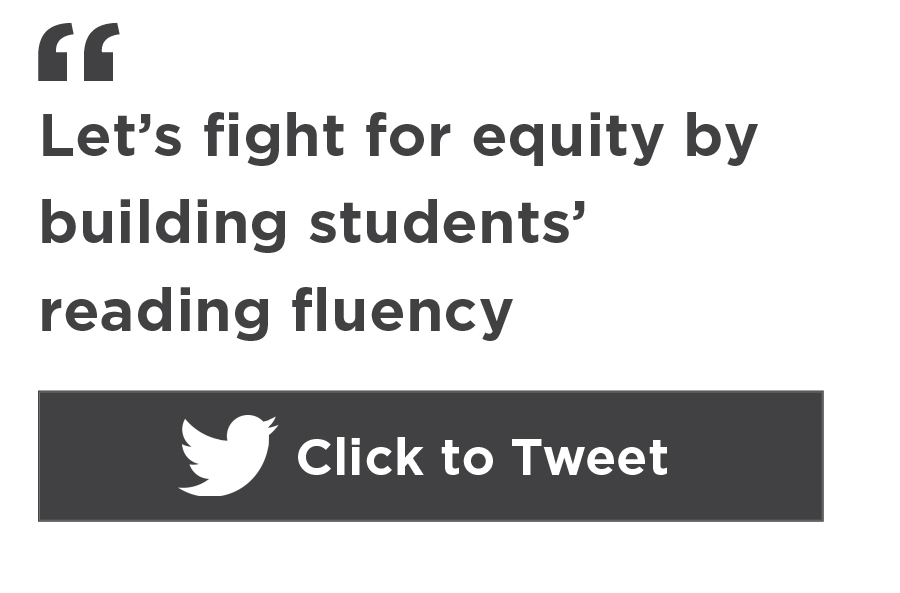
This summer, my city’s public pools have been closed. I’ve missed sitting at the pool’s edge in sunglasses with a friend, and my boys have missed the high dive. We’ve all missed the big waterslide, perfect for a hot July day.
But there’s another kind of slide every summer, one that’s much less fun: learning loss resulting from time away from school. I wish that were the one our cities could close down. It’s one nobody would miss at all.
Oral reading fluency norms show a “summer slide”
The slide that didn’t get shut down this year is the fallback in academic skills that occurs for many kids while they are out of school. In a regular year, this slide occurs over summer vacation. In oral reading fluency, here’s what that typically looks like: kids in elementary come back to school in the fall reading 10 or 20 fewer words correct per minute (WCPM) than they managed the previous spring. That means they come back with less automatic word recognition, so they have to work harder to decode words than they did before the summer.
National norms for oral reading fluency have long been established. Those norms show that third-graders at the 50th percentile start school in fall at 83 WCPM. That’s a slide backward from their spring-of-second-grade rate: 100 WCPM. Young readers regress to about where they were in winter of second grade. The norms show that climbing back up from that slide takes half of third grade. That’s under normal circumstances.
Enter COVID-19. As Dorothy might say to Toto, if she were a statistician: “I have a feeling we’re not in Normal anymore.”
The COVID slide: What could we see?
Not only did the typical summer reading slide not get shut down this year, but it’s also been compounded by COVID-19 school closures. A critical study by researchers Megan Kuhfeld and Beth Tarasawa at NWEA examined how existing data on summer slide might inform our estimates of the learning loss to expect during the pandemic by fall, across subjects in grades 3 and above. How might we think about reading fluency specifically?
The automated speech scoring already standard in MAP Reading Fluency still makes it feasible to assess a whole class simultaneously in about 20 minutes—both in the classroom and remotely.
We know that students’ access to quality, interactive distance learning was highly constrained and highly inequitable across race and socioeconomic status this spring. Were kids getting literacy instruction? Unfortunately, a troubling number were not. This fall, too many students will return to school having had essentially no engagement with reading instruction since mid-March.
What will that look like? If a second-grade student was at the 50th percentile in oral reading fluency before schooling stopped for them, they were probably not yet at the spring norm of 100 WCPM. It was only March, so they were probably reading about 90 WCPM. Their rate before the big break from instruction was lower than typical. Then they spent almost twice as long as a normal summer break away from regular instruction. Their downward chute has been longer. What if their oral reading decay has a slope similar to that of a normal summer? We could see kids who were average readers in second grade entering third grade at levels we typically flag as “at risk.” The same is true for other grades. For kids who received little to no literacy instruction after schools closed in the spring, fall of second grade could look more like fall of first grade, and fall of fourth grade could look more like fall of third grade.
We need to assess fluency at higher grades
While many schools might ordinarily consider fluency to be an assessment focus only through third grade, this fall is not ordinary. This year, many students in fourth and fifth grade are more likely to be at risk in reading fluency, and we need both assessment and instruction to be at the ready. To meet this need, we have expanded MAP® Reading Fluency™ to include assessment of older students. We have made some important changes:
- Passages for oral reading now range through 1000L in English and 800L in Spanish on the Lexile® text measure, making it possible to assess on grade-level text even beyond fifth grade.
- An interface more appropriate to older students is available to help them stay engaged.
The automated speech scoring already standard in MAP Reading Fluency still makes it feasible to assess a whole class simultaneously in about 20 minutes—both in the classroom and remotely. This helps teachers of any grade level assess fluency while protecting that increasingly valuable instructional time.
How to teach fluency more intensively
With MAP Reading Fluency data in hand, teachers can be better prepared to differentiate instruction and tackle the reading learning loss suffered by their students this year. A significant portion of them are going to need a focus on oral reading fluency. Luckily, we have solid, research-based practices to draw from. Expert participants in the recent NWEA Literacy Leaders Council describe excellent approaches. To learn more:
- Visit Timothy Rasinski’s site. He’s a professor of literacy education at Kent State University and directs their reading clinic. Also check out one teacher’s action research as she implemented Rasinski’s classic fluency development lesson with her fourth-graders, and read Meredith Liben’s successful approach with second-graders and families.
- At UnboundEd, listen to David Paige describe how repeated reading of challenging text can help build fluency, including with older students.
Closing opportunity gaps in fluency development is about equity
This spring and summer, students have clearly been offered strikingly different opportunities by ZIP code, family resources, and race and ethnicity. As a result, reading fluency has been on a long downward slide for some. Until we figure out how to shut down that kind of slide—and keep the waterslides at the city pools open instead—we’ll need to get to work on building those ladders upward to opportunity. This fall, let’s fight for equity by getting ready to build students’ reading fluency.







